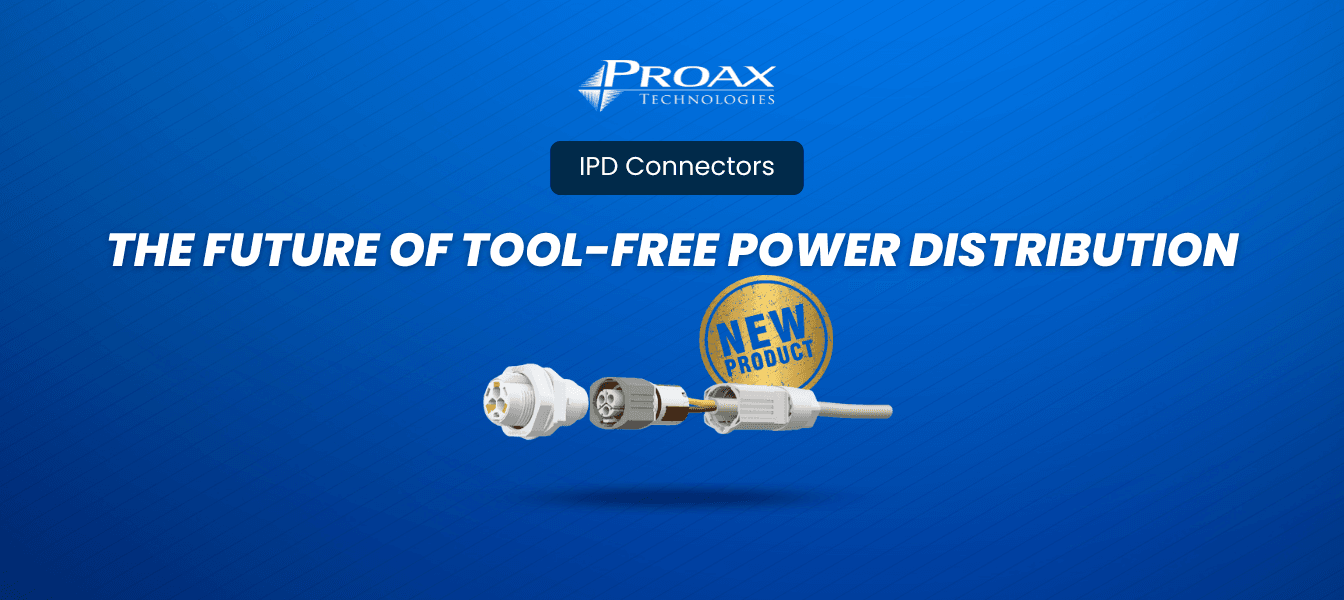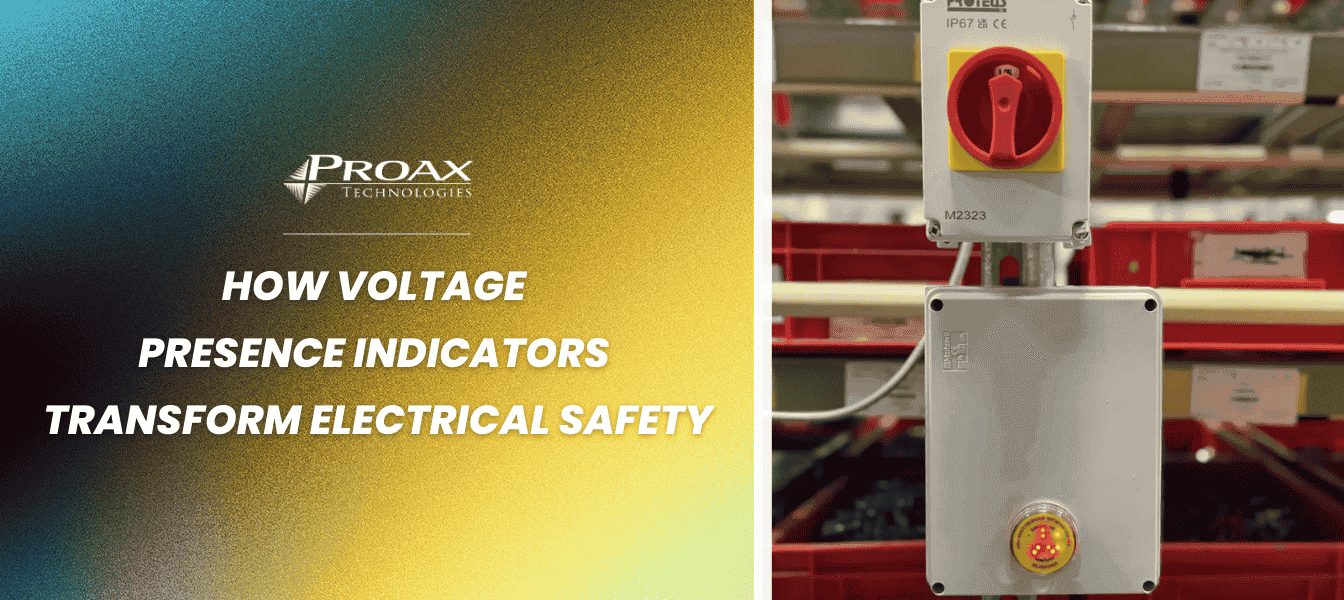Modern automation and industrial control systems rely heavily on inductive proximity sensors. These sensors use the principles of electromagnetic induction to determine if metallic items are present or absent without coming into direct touch with them. Their resistance to harsh circumstances, such as exposure to dust, grime, oil, and moisture, makes them appropriate for a variety of industrial settings and applications. Proax Technologies is here to provide the best sensor options from Omron, a leading manufacturer of industrial automation components, and a renowned range of inductive proximity sensors.

Operating Principles
Omron inductive proximity sensors operate based on the principle of electromagnetic induction, enabling them to detect metallic objects without direct contact. These sensors generate a high-frequency electromagnetic field from their detection face, typically through a coil. When a metallic object enters this field, it induces small electrical currents, known as eddy currents, on the object's surface. These eddy currents create a disturbance in the sensor's electromagnetic field, leading to a reduction in the amplitude of the oscillation within the sensor's circuit.
The sensor’s detection circuitry monitors this disturbance, and once it reaches a specific threshold, the sensor activates its output circuit. This output usually serves as a simple on/off signal, indicating whether a metal object is within the sensor’s detection range. The sensing distance varies depending on the size, shape, and material of the object, as well as the sensor's design. Shielded sensors, which can be mounted flush with metal surfaces, have a shorter sensing distance, while unshielded sensors, with a longer sensing range, require more space around the sensing face to avoid interference.
Omron inductive proximity sensors are known for their fast response times, making them ideal for high-speed applications. They are also robust and can operate in various environmental conditions, including dusty or wet environments, due to their sealed construction. These sensors are widely used in industrial applications for tasks such as position detection, object counting, and automation in manufacturing processes.

Key Features:
- Non-contact Detection: These sensors detect objects without physical contact, reducing wear and tear and increasing the lifespan of both the sensor and the target object.
- Durability: They are robust and can operate in harsh environments, including areas with dust, dirt, oil, and moisture.
- High Speed and Precision: Inductive sensors can detect metallic objects quickly and accurately, making them ideal for high-speed automation processes.
- Safety: By detecting the presence or absence of objects, these sensors contribute to safety in automated systems, preventing machinery from operating under unsafe conditions or avoiding collisions.
- Maintenance Reduction: The non-contact nature and durability of these sensors reduce maintenance requirements, leading to lower operational costs and less downtime in industrial settings.
Applications
Because inductive proximity sensors can detect metallic objects without making physical contact, they are frequently employed in industrial and automation applications. They are frequently used in position-sensing manufacturing procedures to keep an eye on whether metal components are present in machinery and assembly lines. These sensors play a critical role in automated manufacturing lines by identifying metal components and triggering operations like drilling, welding, or cutting only when the metal is positioned appropriately.
In conveyor systems, inductive proximity sensors are used for object counting, detecting metal objects as they pass by, which helps in managing inventory or quality control. Additionally, these sensors are used in safety systems to detect the position of machine parts, preventing machinery from operating when a part is missing or out of place. Inductive proximity sensors are also found in automotive applications, such as detecting the position of metal components in engines or transmission systems, contributing to the efficiency and safety of vehicles.
Omron Proximity Sensors
Omron proximity sensors are available in capacitive and high-frequency oscillation types for detecting non-metal items and ferrous and non-ferrous metal objects, respectively. As an authorized Omron distributor, see product options below to learn more about our offerings.
E2A DC 3-wire Extended Range Proximity Sensor
E2A inductive proximity sensors feature up to 2x sensing distance in nickel plated brass or steel housing (depending on sensor size).
E2A DC 3-wire Long Barrel Proximity Sensor
The long Range Proximity Sensor Threaded Nickel Plated Brass & Stainless Steel Short Barrel.

E2E Standard DC 2-wire Proximity sensor
The E2E Family offers the most complete line of proximity sensors. Designed to meet worldwide standards like CENELEC, IEC, UL and more. The E2E proximity sensor can be used in standard and demanding ferrous metal detection applications.
E2E DC 3-wire Standard Proximity sensor
The E2E Family offers the most complete line of proximity sensors. Designed to meet world wide standards like CENELEC, IEC, UL and more. The E2E proximity sensor can be used in standard and demanding applications.
E2B DC 3-wire Economy Proximity Sensor
Thanks to the simple construction and Omron’s innovative “hot melt” production process, E2B sensors offer a cost effective, but reliable ferrous metal detection solution in a standard short barrel form factor.
E2B DC 3-wire Long Barrel Economy Proximity Sensor
Thanks to the simple construction and Omron’s innovative “hot melt” production process, E2B sensors offer a cost-effective, but reliable ferrous metal detection solution in a long barrel form factor.
E2E2 DC 3-wire Long Barrel Proximity Sensor
E2E Long-Barrel DC 3-Wire Proximity Sensors Built for Rugged Duty.
E2E Mini DC 3-wire Proximity Sensor
Omron's inductive proximity sensor technology is applied to a range of small diameter inductive sensors. The E2E Small Diameter provides precision detection and allows installation in even the most confined spaces. The portfolio has been extended to include non-shielded types and versions with pig-tail connector leads.
Contact us today to further discuss your needs and discover more about Omron inductive proximity sensors. Our experts are here to provide tailored solutions that drive efficiency and performance.














































